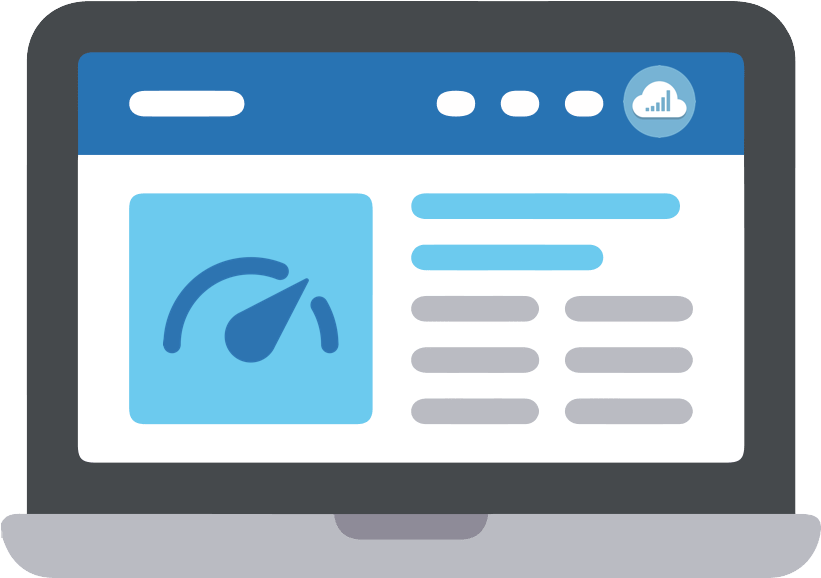CELLULAR INTERNET
Explained For Starters.

Explained For Starters.

It can be complex to navigate through the world of cellular internet.
So, let's just take a step back and get a big picture view of the way to accomplish your goal.
There are 3 basic steps to getting connected to cellular internet.
Details
As best you can, figure out which of the "Big 3" cellular carriers (AT&T, Verizon, T-Mobile) works best at your location for reception and speed. In order to do this, you have a few options:
> Your Phone - Take note of the carrier that you have. Your carrier will either be one of the Big 3 or will at least use one of the Big 3's networks (ie. Cricket = AT&T, Visible = Verizon, Mint = T-Mobile, etc). Go to the location you want your cellular internet to be (unless, of course, you are a traveler*). Then test out the reception and speeds in that location. Reception tests can be as simple as seeing if your phone has a signal, how many bars, and if it works. (More in-depth reception tests can be as complex as using Field Test Mode on iPhone or downloading an Android app - and comparing signal info to this cellular signal guide.) Speed tests are generally simple and the most popular is Ookla's Speedtest website or mobile app (Fast.com is another popular option, but it may not be the best option to use due to possible throttling). Of course, using your phone is not the perfect way to figure out your cellular situation because it all depends on your specific phone & plan - generally lower quality phones have lower performance, phones have different cellular band support, relatively small antenna, some plans are throttled, etc. Also, a cellular internet setup with external antenna would obviously far exceed the capabilities of a phone. But, this will at least give you a baseline to work with.
> Family, Friends, Neighbors - You can ask people who live in the area what they consider the best carrier(s) for the location. You can also invite people who have different carriers to come to the location and do the reception and speed tests. Again, different phones & plans will have different results, but it should at least give you that baseline.
> Prepaid Plan Tests - If you don't have enough other testers, you could just go get some cheap Prepaid plans to use for some testing. Make sure your phone is unlocked or at least you have a device to work with each carrier you get a Prepaid plan for to run tests.
> Cellular Database Website - There are a few websites out there that try to document cellular tower locations and stats on the towers. One of the most popular ones is Cellmapper. This is a crowdsourced database that can be very helpful to find the closest towers to you based on carrier, and what cellular bands they are supporting. It isn't always accurate, but should at least give you some idea. If you want to go more in depth in researching your local cell towers, you can actually hire a company to do a Cellular Tower Survey.
*Normally with travelers (RVers, truckers, etc), we recommend having at least 2 of the Big 3 carriers so they can usually have coverage from at least one carrier, if the other carrier doesn't have coverage in a certain location.
Whichever cellular carrier is best (Step 1), explore the cellular plan options that are based on that carrier. Be aware that there are generally two main categories of options:
> A "legit" plan - approved by the carriers to be used in cellular routers for cellular internet usage.
> An "untraditional" plan - not approved/intended by carriers to be used in cellular routers for cellular internet usage - this option will usually require certain workarounds (discussed later), normally is against the Terms of Service (TOS) of the plan, and may even venture into legal grey areas.
LEARN MORE
View the general overview of the types of plans and a list of popular plans here.
Based on the cellular plan (Step 2), you then need to figure out the cellular setup. This includes the device you put the SIM in and any software settings, workarounds, additional hardware, and networking configurations needed. Due to the vast amount of devices & hardware options available, we won't cover many specifics, but there are some general things that apply in most situations.
> Based On Carrier & Plan - The main thing would be that the device choice would based on the carrier you chose in Step 1 and what plan you are using in Step 2. Devices tend to work better with certain carriers more than others. Also, some carriers require certain workarounds, depending on what plan you get. Not all devices support all the possible workarounds needed.
> Based On Cellular Bands - It will help if you try to figure out what cellular bands the device you are considering supports and compare that to the bands your carrier uses and your local towers have (using something like Cellmapper, as discussed in Step 1).
> Based On Cellular Reception - If you have great cellular reception inside the location, then you have many more device options available. If you have sub-par reception inside the location, you will probably need to pursue more complex device options with possible external antenna and other external setups. Unfortunately, we are not well-versed in cellular antennas to offer much information about them on this site.
With any cellular carrier, plan, and setup, be prepared to possibly do a lot of trial & error to find what works for you.
LEARN MORE
View the general overview of the types of workarounds and software setup here.